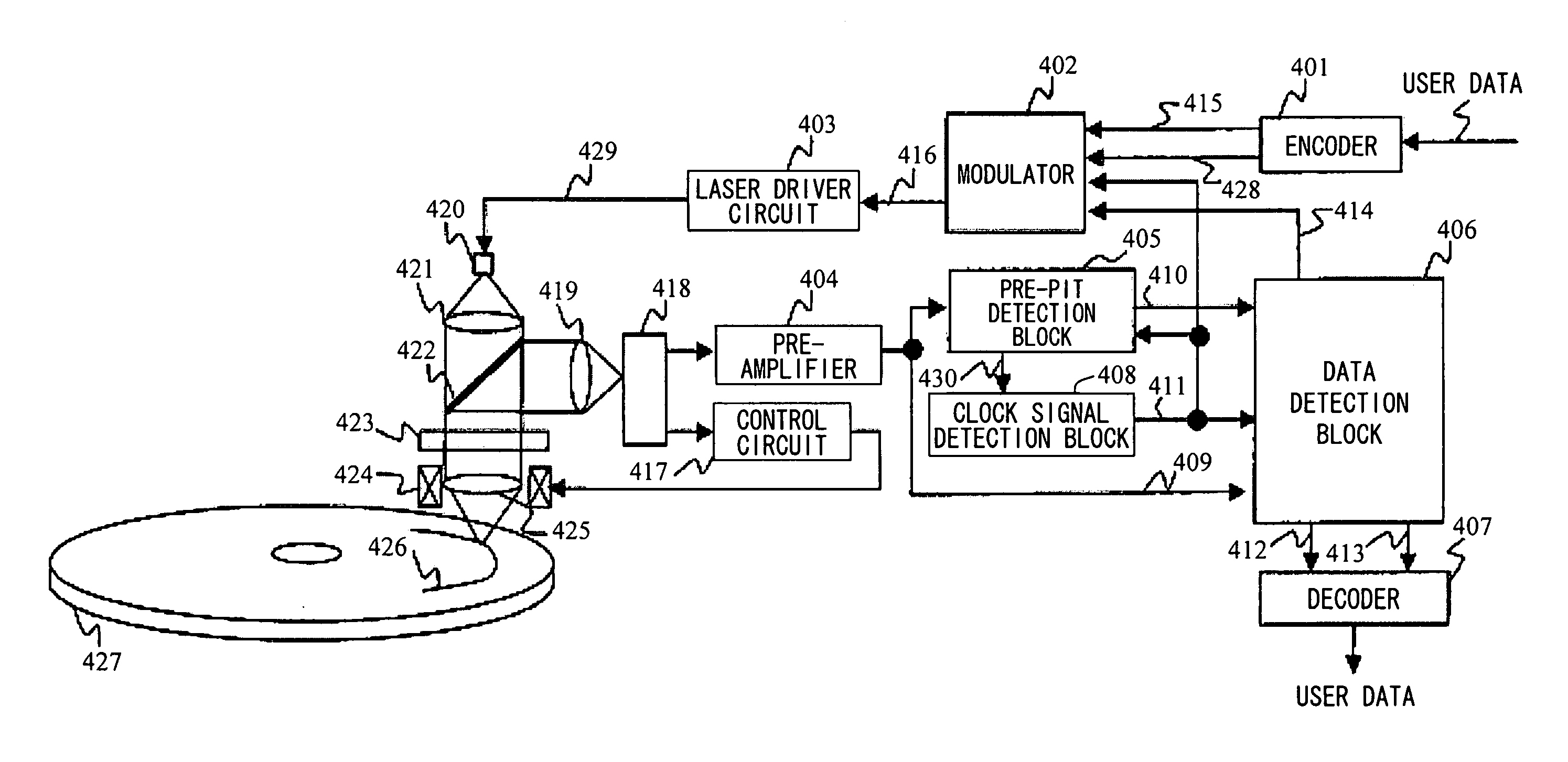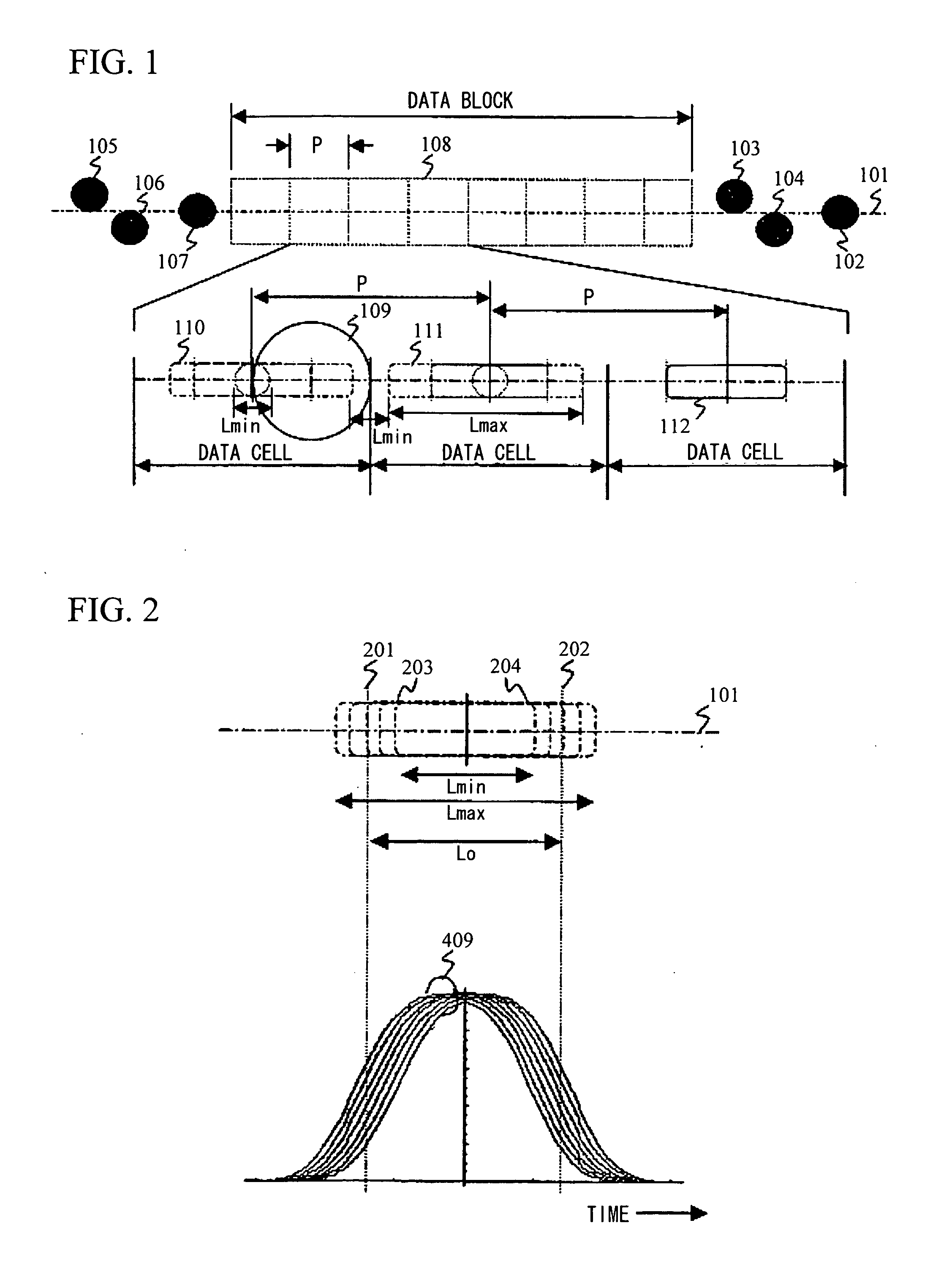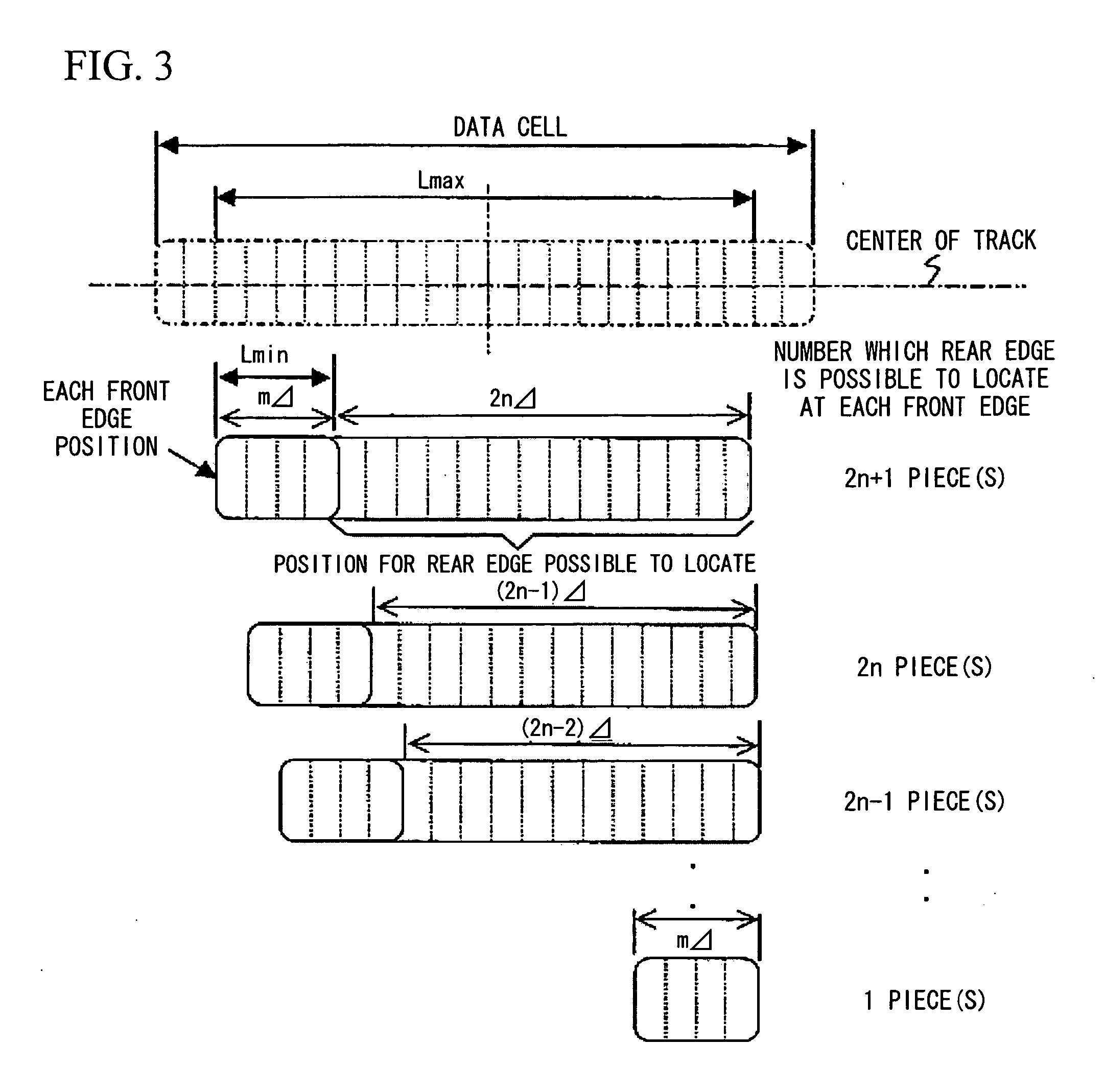Information recording and reproducing apparatus, and information recording method
a technology which is applied in the field of information recording and reproducing apparatus, information recording method, optical disk apparatus, etc., can solve the problems of optical removal of disturbance, deterioration of readout signals, etc., and achieve the reduction of disturbance in the amount of light transmitted through the non-readout layer, optical removal is not possible, and the effect of optical removal
- Summary
- Abstract
- Description
- Claims
- Application Information
AI Technical Summary
Benefits of technology
Problems solved by technology
Method used
Image
Examples
embodiment 1
[Embodiment 1]
[0048] A first embodiment of the invention will be described by referring to FIGS. 4 to 12.
[0049]FIG. 4 shows a block diagram of an optical information recording and reproducing apparatus according to the invention, in a case where a data cell has one mark. Light emitted by a semiconductor laser 420 is collimated into parallel light by a collimator lens 421. The parallel light passes through a polarized beam splitter 422 and further through a 1 / 4-wavelength plate 423, whereby the linear polarized light is converted into circular polarized light. The circular polarized light is focused on a rotating disk-type recording medium 427 by an object lens 425, forming a small spot thereon. Light reflected by the recording medium 427 passes through the object lens 425 again and further through the 1 / 4-wavelength plate 423, whereby the light is converted into linear polarized light with its direction of polarization rotated by 90 degrees with respect to the incident light. The l...
embodiment 2
[Embodiment 2]
[0082] A second embodiment of the invention will be described with reference to FIGS. 22 to 24. FIG. 22 shows a block diagram of an optical information recording and reproducing apparatus according to the invention in a case where a data cell contains one or a plurality of marks. The apparatus differs from that of FIG. 4 only in the encoder, modulator, and decoder. While the encoder 401 outputs the front- and rear-edge positions, an encoder 1701 outputs an NRZI (Non Return to Zero Inverted) codeword 1704. In accordance with such modification, a modulator 1702 is modified to receive the NRZI codeword 1704 and output a signal 416, and a decoder 1703 is modified to receive a detected NRZI codeword 1705 and output user data. By having the encoder to output the NRZI codeword, the extension of the data cell structure for improving recording efficiency, such as adapting the data cell to contain a plurality of marks or having a mark to appear over the border between data cells...
embodiment 3
[Embodiment 3]
[0089] Referring to FIGS. 26, 27, 28, and 29, another method for detecting a mark length and a mark center position through a signal level and a differential zero cross point of a signal will be described. FIGS. 26 and 27, which are used in the present embodiment instead of FIGS. 7 and 8, show the correspondence between user data and data cells. In FIGS. 26 and 27, user data and data cells are associated by using a specific interval A that is one half the A in FIGS. 7 and 8 so that the number of data cell regions is doubled. For codewords having marks with lengths that are odd-number multiples of 2A′ , the mark position is shifted by A. A mark center detection interval is A / 2=A′ when detecting a center position of a mark in each data cell in a data cell sequence converted from user data using FIGS. 7 and 8 (for example, the difference between a center position of a mark having a length 7A′ and a center position of a mark having a length 8A, both having the same front e...
PUM
| Property | Measurement | Unit |
|---|---|---|
| distance | aaaaa | aaaaa |
| distance | aaaaa | aaaaa |
| refractive index | aaaaa | aaaaa |
Abstract
Description
Claims
Application Information
 Login to View More
Login to View More - R&D
- Intellectual Property
- Life Sciences
- Materials
- Tech Scout
- Unparalleled Data Quality
- Higher Quality Content
- 60% Fewer Hallucinations
Browse by: Latest US Patents, China's latest patents, Technical Efficacy Thesaurus, Application Domain, Technology Topic, Popular Technical Reports.
© 2025 PatSnap. All rights reserved.Legal|Privacy policy|Modern Slavery Act Transparency Statement|Sitemap|About US| Contact US: help@patsnap.com



